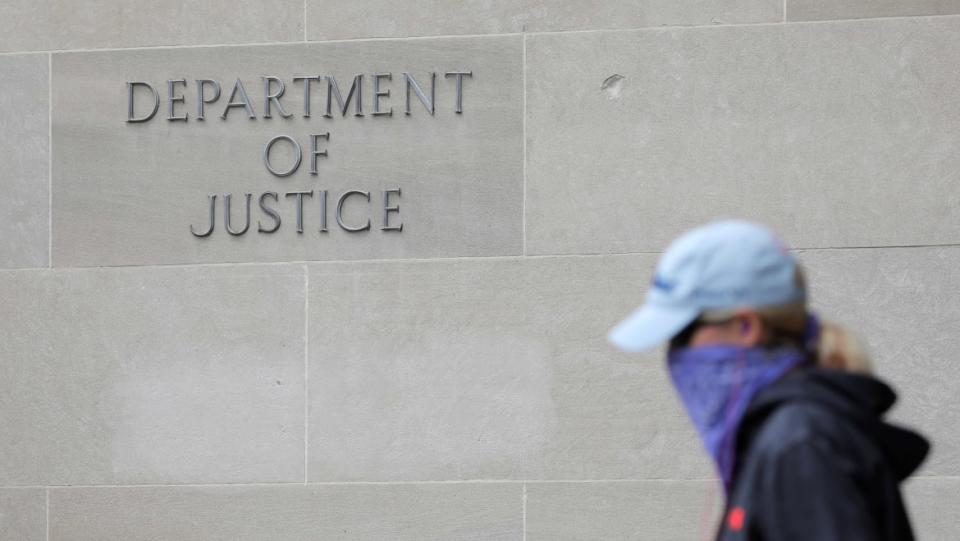FBI Potentially Endangered Female Staffers by Using Their Photos to Lure Sexual Predators, Watchdog Says

The FBI has been improperly using photos of young female support staff to pose as underage kids in highly sensitive undercover sting operations targeting online sexual predators, according to a scathing new report from the bureau’s internal watchdog.
A management advisory memo issued by the Office of the Inspector General (OIG) for the Department of Justice states the women’s pictures, in which they were fully clothed and had their faces blurred, had been sent to potential rape suspects as bait, a practice that could have severely jeopardized their personal safety.
Inspector General Michael Horowitz singled out one unnamed FBI agent in particular, alleging the agent asked a female office worker to provide “provocative” photos of herself that he then used to lure suspects in an undercover sex-trafficking investigation. But, the memo stated, it was but one example of a wider issue.
What It’s Like to Take Down the World’s Most Notorious Sexual Predator
According to the eight-page document, titled Notification of Concerns regarding Use of Photographs of FBI Employees for Online Undercover Operations, the FBI’s undercover policy says that “[s]upport personnel will not be used in undercover roles unless it is absolutely necessary” and “personally authorized” by the special agent in charge (SAC) at the field office conducting the investigation. The SAC also “must certify that the support employee has volunteered for the assignment and is capable of performing the role and provide a detailed explanation as to why a sworn [law enforcement officer] cannot be utilized.”
But the OIG found this rule was not always followed. Moreover, the OIG said there was no official policy requiring agents to obtain “written informed consent” from a bureau employee not certified as an undercover agent before using their photos, no requirement to obtain approval from their supervisors, and that there was “otherwise no oversight” involved. In the case that was the main focus of the OIG’s inquiry, the special agent overseeing it allegedly didn’t keep records of which employees’ photos he used, nor the sites on which he went “fishing” for predators.
“[T]he FBI had no documentation or information regarding whether the photographs still appear on the websites or how long the photographs appeared on the websites, during which time the photographs could have been—and potentially could still be— downloaded, copied, or further disseminated,” the memo states. “The OIG believes that this conduct poses potential adverse consequences for [FBI support staff] participating in [undercover] operations, including potentially placing them in danger of becoming the victims of criminal offenses.” The bureau, in response, said its “utilization of certified undercover employees (UCE) and certified online covert employees (OCE) in authorized investigative activities is an essential law enforcement technique that dramatically enhances the FBI’s ability to detect and disrupt criminal actors.” An FBI explainer published last year stated that these stings “can involve different approaches on a variety of platforms. Some are proactive, where law enforcement officers impersonate a child or an adult who has access to a young person, to apprehend suspects before they offend.”
In such operations, the targets almost always ask the undercover agent for pictures of the underage child on offer. In order to appear legit, the agents must send something realistic-looking. According to a sample of federal court filings reviewed by The Daily Beast, the FBI usually uses “young-looking” confidential sources and “cooperators,” or even artificially-created images of young people who don’t actually exist. Here’s how those situations tend to play out—without the use of non-certified FBI support staff:
In one case earlier this year, an undercover FBI agent chatted online with an Illinois man in a Kik chat room who allegedly expressed interest in sexually abusing the agent’s fictitious 11-year-old niece. According to a criminal complaint, the agent sent a “picture of an adult cooperator purporting to be the 11-year-old female using a filter to make the cooperator appear younger.” The suspect was arrested after showing up to meet them at a local hourly motel.
Another operation began when a man answered an online ad posted by an undercover FBI agent, which was titled, “Littles?” The suspect allegedly then texted with the agent pretending to offer his fictitious 11-year-old daughter to adults looking to sexually abuse her. The man asked for a picture of the child to verify that he wasn’t being set up. According to the complaint, the agent sent a photo of “a cooperator purporting to be a [sic] 11-year-old female.” The suspect was arrested when he arrived at an area gas station to meet the child.
After a man responded to an internet posting last year with the heading “Taboo,” he allegedly exchanged messages with an undercover FBI agent luring predators on Craigslist with a make-believe 10-year-old girl. The suspect asked for pictures of the child, offering to send one of his own “ugly-ass mug.” A criminal complaint explains that the undercover agent generated an image—presumably using AI—to satisfy the man’s request: “Picture sent of a purported 10-year-old female,” the complaint states. “The purported female was not real.” The suspect was arrested after going to meet the undercover agent at a McDonald’s.
In response to the OIG report, the FBI said it would “evaluate existing policy and determine which policies require adjustment, drafting new language to establish the needed guidelines.” The latest findings come on the heels of a blistering OIG report issued in July, which accused the FBI of mishandling its investigation into allegations of sexual abuse by former USA Gymnastics physician Larry Nassar.
Got a tip? Send it to The Daily Beast here
Get our top stories in your inbox every day. Sign up now!
Daily Beast Membership: Beast Inside goes deeper on the stories that matter to you. Learn more.

 Yahoo Finance
Yahoo Finance 